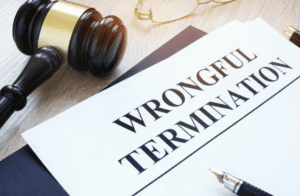
Since the advent of the employer-employee relationship, there has been a power struggle between these two sides of a company. This balance of power has been in constant flux throughout modern history, depending on the industry and country.
For example, in California, non-compete agreements are unenforceable. This is one reason why the tech boom in Silicon Valley was so successful. Highly innovative workers could freely move between companies, facilitating the sharing — or stealing — of ideas, depending on which perspective you want to take. For a point in time, much of the power rested with the workers.
As companies became more successful and powerful, their desire and ability to control their highly talented workers grew. But they couldn’t use a non-compete agreement, at least in California. So they resorted to other methods, such as alleging their former employees were misappropriating trade secrets.
But the desire to control workers isn’t the only reason why companies are using trade secret laws to go after former employees. Ever since the Great Recession, when there was a glut of highly talented workers with plenty of confidential knowledge about their past work in their previous jobs, trade secret litigation has steadily risen.
Then other factors have contributed to the increase in litigation. These include:
- The rise of telecommuting
- Use of outside contractors
- States restricting the use of non-compete agreements
- Passage of the Defend Trade Secrets Act of 2016
And now, there is an expectation of another big rise in trade secret litigation because of the coronavirus. More people working from home or getting fired. This means increased opportunity or motivation to take an employer’s trade secrets.
Admittedly, there are a few unscrupulous individuals stealing trade secrets. And there are probably a few more employees who are a little careless in how they use social media or their electronic devices. However, some of the blame for the increase in trade secret lawsuits also falls on the employers, who could occasionally use less-than-fair tactics against their employees. Before we discuss that point, we need to explain what a trade secret is.
What Is a Trade Secret?
The legal definition of a trade secret is not absolute, but generally speaking, it is a piece of information that:
- Can provide its owner with economic value;
- Is not generally known or ascertainable by the public; and
- The owner has taken reasonable steps to keep the information secret.
A trade secret is not the same as confidential information. Confidential information is a broad classification for any type of information that is not known to the general public. A trade secret is a type of confidential information that enjoys certain legal protections.
Given the existence of patent laws, why do companies keep trade secrets? Because obtaining patent protection requires the divulging of information the owner would like to keep a secret. Also, patent protections aren’t forever, often lasting just a couple of decades.
When enforcing trade secret rights, companies usually rely on the following laws:
- The Economic Espionage Act of 1996.
- State law
- The Defend Trade Secrets Act of 2016
The Economic Espionage Act of 1996
The Economic Espionage Act of 1996 (EEA) makes it a federal crime for the misappropriation of trade secrets, whether the purpose is to help a domestic company or foreign power. Misappropriation includes not just outright theft of information, but also knowingly receiving, buying or possessing a misappropriated trade secret. Attempts to misappropriate a trade secret, including conspiracy, are also outlawed under the EEA.
If found guilty, an individual could face up to 15 years in prison and be fined up to $5 million. There is also a right to bring a civil cause of action to obtain an injunction and recover monetary damages.
The EEA also has two notable features for employees. First, it grants immunity from civil or criminal liability if they disclose the trade secret to a government official or attorney to report suspected illegal activity. Second, employers must give written notice of this immunity in any employment contract that controls the use of trade secrets or other confidential information.
Companies who believe a former employee has stolen trade secrets will sometimes cooperate with federal prosecutors by providing them with information that may assist in their case against the former employee who is alleged to have misappropriated the trade secrets. So not only do employees have to worry about getting sued in civil court for taking trade secrets, but they now face the risk of significant time in prison.
One of the more notable instances of this occurred when Waymo (a subsidiary of Alphabet Inc., the parent company of Google) cooperated with federal prosecutors in their case against Anthony Levandowski. He ended up pleading guilty to one count of trade secret theft (out of 33 total counts) and was sentenced to 18 months in prison. Mr. Levandowski was also ordered to pay $756,499.22 in restitution and a $95,000 fine.
Trade Secret State Laws
Before the passage of the Defend Trade Secrets Act of 2016, most trade secret civil prosecution came under state law. Originally, each state developed its own body of law concerning trade secret civil liability. But things became overly complicated due to companies doing business and having locations in multiple states.
In an attempt to establish some form of uniformity concerning trade secret litigation, most states adopted the Uniform Trade Secrets Act (UTSA). This is a uniform act intended to establish the same legislation across multiple jurisdictions; however, many states made slight modifications when they codified the UTSA into law. For example, each state had its own definition of “trade secret,” along with different remedies available and procedural requirements, such as statutes of limitation.
The Defend Trade Secrets Act of 2016
The Defend Trade Secrets Act of 2016 (DTSA) completely changed the trade secret litigation landscape. Passed by Congress in almost unanimous fashion and signed into law by President Obama, the DTSA was based on the UTSA.
At its core, the DTSA provides a federal, civil cause of action to victims of trade secret misappropriation. Ever since its passage, there has been a dramatic increase in trade secret prosecution, due to the relative litigation ease and clarity brought by the DTSA.
From 2010 to 2015, there were about 1,100 federal trade secret cases. From 2017 to 2019, following the enactment of the DTSA, there were roughly 1,400 cases. That’s 300 more cases over the course of three fewer years.
The DTSA defines a trade secret very broadly and refers to:
“all forms and types of financial, business, scientific, technical, economic, or engineering information, including patterns, plans, compilations, program devices, formulas, designs, prototypes, methods, techniques, processes, procedures, programs, or codes, whether tangible or intangible, and whether or how stored, compiled, or memorialized physically, electronically, graphically, photographically, or in writing if—
(A) the owner thereof has taken reasonable measures to keep such information secret; and
(B) the information derives independent economic value, actual or potential, from not being generally known to, and not being readily ascertainable through proper means by, another person who can obtain economic value from the disclosure or use of the information”
In plain English, this is essentially the same definition we used earlier in this article. The next important definition provided by the DTSA is what qualifies as “misappropriation.”
Under the DTSA, the following actions constitute misappropriation:
- Acquiring a trade secret from someone else when the person has reason to know the information was obtained improperly.
- Disclosing or using a trade secret without permission when the person obtained the trade secret improperly or knew the information being shared was a trade secret that had been obtained through improper means.
Misappropriation can also include situations where someone obtains a trade secret through a mistake or on accident, then discloses or makes use of that information. However, the person must be aware that they’re using or sharing a trade secret.
One of the key terms in defining misappropriation is figuring out what “improper” means. It means what you think it does; it refers to situations where someone steals the information or uses bribery, misrepresentation, espionage or similar tactics to acquire the information. However, it does not include reverse engineering or independent derivation of the trade secret.
If an employer wishes to sue an employee for the misappropriation of trade secrets, they can usually bring suit not just under the DTSA, but the relevant state trade secret law, too. That’s because the DTSA does not preempt state law, but instead, operates parallel to it.
If an employee is found to have violated the DTSA, an employer can potentially recover royalties, damages amounting to the employer’s actual damages due to the misappropriation, attorney’s fees, exemplary damages (this doubles the actual damages) or an injunction.
Finally, as with the EEA, the DTSA protects whistleblowers who divulge trade secrets to an attorney or government official to report illegal activity.
Why Are Employers Using Trade Secret Laws Against High-Level Employees?
The short answer is because it’s a very effective way of making the employee do what the employer wants. Due to the importance of their position and through the course of their duties, many high-level employees will have exposure or gain access to an employer’s trade secrets.
But what happens if this employee wants to change jobs? Lots of employers fear what the high-level employee might do with the information they gained.
Depending on the facts surrounding the employment relationship, an employer’s only realistic option might be using trade secret litigation (or the threat of litigation) to scare employees into staying or agreeing to leave on the employer’s terms.
For instance, non-compete agreements aren’t always recognized. They’re largely banned in California, North Dakota, Washington, D.C. and Oklahoma. Then there’s the situation where they’re enforceable, but due to the circumstances, they aren’t enforceable against a specific employee.
How about a non-disclosure agreement (NDA)? This is an employment contract that can require employees to not divulge confidential information, including trade secrets. An NDA can be an effective tool for protecting trade secrets, but they’re not perfect.
It could be that there’s a poorly drafted section that doesn’t apply to the employee or the trade secret. Maybe it’s declared unenforceable by a court. Or perhaps it’s enforceable and an employee is found to have violated it, but the legal relief offered by the court is insufficient.
The threat of a trade secret lawsuit can also be used in other situations commonly faced by executives and other high-level employees. Some of these situations may include:
- Convincing the employee to stay with his or her current employer.
- Coercing an employee to agree to not work with a certain employer, in a particular industry or in a specific geographic region in return for the employer’s promise not to prosecute the employee for trade secrete misappropriation. An employer might try to obtain this promise from the employee even if the trade secret misappropriation allegations are meritless.
- Leverage when a departing employee is trying to negotiate a more generous severance package.
- Threatening the employee who might have an unrelated legal cause of action against the employee, such as a wrongful termination or discrimination claim.
- Effectively motivating the employee to be extra careful in his or her new job to not do anything that might even appear to be misusing a trade secret.
- Making the employee take extra precautions when handling trade secrets, such as how they secure the work laptop they use at home that contains trade secrets on it.
Some of these aren’t necessarily bad. It’s perfectly reasonable for an employer to want its employees to take trade secret protection seriously. But it can also be overly-oppressive, scaring employees into doing things they don’t have to do.
What Can Employees Do to Protect Themselves?
The first thing the employee should do is talk to an employment law attorney who is experienced with trade secret litigation. This is important to get an idea as to the merits of the allegations against the employee as well as the potential consequences the employee faces in a trade secret lawsuit. And if the employee shared the trade secrets as a whistleblower, they need to understand the legal protections available and how they work.
Second, if the claim of trade secret misappropriation is made in bad faith, the employer can be liable for the employee’s attorney’s fees.
Third, if the employer is making trade secret misappropriate threats that are meritless or made in bad faith, there may be a malicious prosecution or abuse of process legal remedies available that the employee can use to fight back against the employer.
Fourth, the employee should carefully follow all BYOD, information technology and social media use policies, as well as offboarding and onboarding procedures as required by the old and new employers. For example, if an old employer is asking the departing employee to turn in all company-issued electronic devices, the employee should promptly comply.
Also, assuming it’s reasonable to do so, an employee should not do anything that might give the impression of trade secret theft. This means no wiping of smartphones or laptops or backing up large amounts of data from the employer’s servers. Even if nothing dodgy is going on, it may raise unnecessary red flags with the former employer and make them mistakenly think something improper is occurring.
Fifth, if a soon-departing employee anticipates trade secret disputes, one option is to have preemptive discussions with the employer about what information constitutes a company trade secret. With the help of an attorney, the employee may be able to take certain information with them to his or her new job, but after giving notice and getting prior approval from the employer.
Depending on the employee’s job, these discussions may have already occurred if they signed a Proprietary Information and Inventions Assignment Agreement. However, during the course of employment, there might have been some creations or information that might lead to a dispute between the employer and employee as to what constitutes a trade secret.
Bottom Line
Thanks to trade secrets, employers now have powerful tools at their disposal to not just protect their trade secrets, but also control their high-level employees; however, these tools can be misused, and cases can be pursued against employers who are too flagrant in their attempts to coerce top-level employees into restricting the future of their careers.




